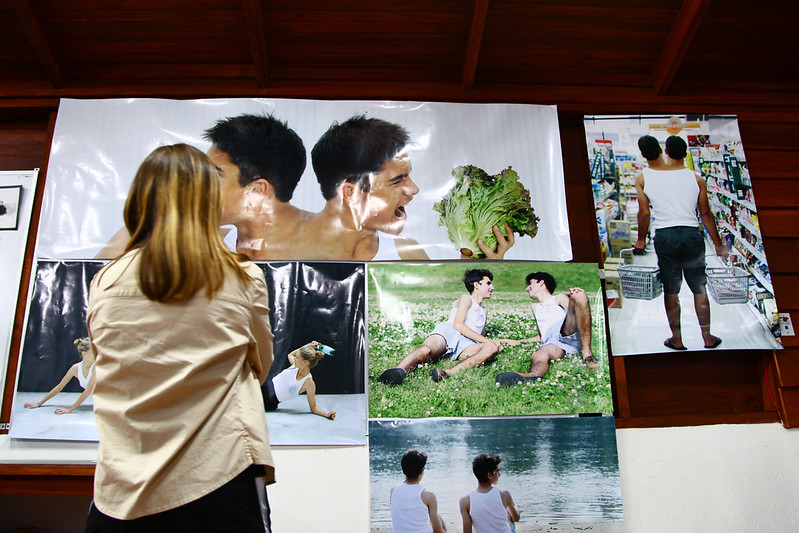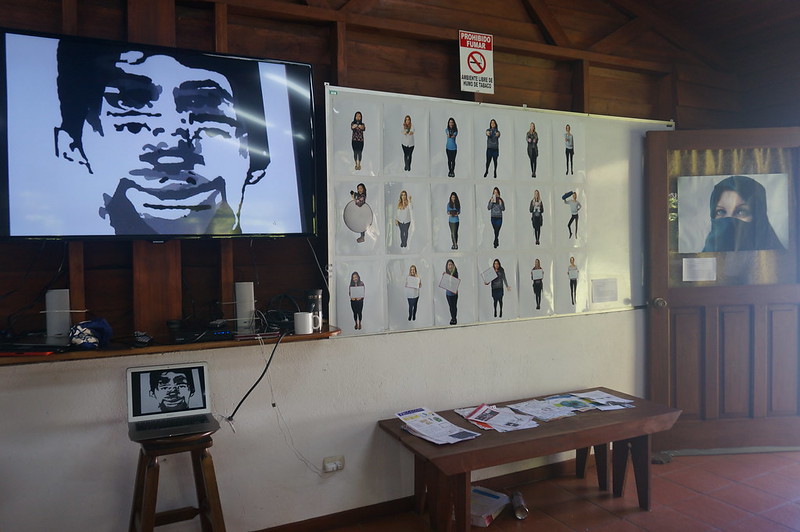As I write this, I'm waiting for our students to return from their weXplore, a five-day excursion that takes students beyond their host city for immersive cultural experiences. For the past two months, we as a school have called Maun, Botswana, our home. It's a small town on the edge of the Okavango Delta and, for many travelers, a doorway into Africa. But Maun is only one perspective, and it...
Read More
Though this won’t be our first class of 12th graders to graduate, this will be our first graduating class to contain students who have completed the two-year IB Visual Arts course. Those five students –Isaac, Liisa, Melissa, Alejandro, and Julia– produced forty pieces of artwork that were featured in our Grade 12 art exhibition this week in Monteverde, Costa Rica. The pieces span an impressive range of mediums, including digital painting, video, animation, drawing, and photography. Also highlighted in the Visual Arts exhibition were their beautifully presented workbook pages.

At high schools around the world, these art exhibitions are rightly considered a big deal. It is a time for graduating students to showcase their skills and validate the many hours of tireless effort they’ve put in over the last two years. To give you some context, over the last two years our students were required to produce 8 – 12 pieces of artwork and 30 – 40 investigation workbook pages providing supporting arguments for the pieces.The days leading up to the exhibition are a nerve-wracking time for the young artists, as they spend each waking hour obsessing over their pieces, trying to perfect the final details right up until the moment of display.
One might ask, how was our exhibition in Monteverde different from any other IB art exhibition? The answer lies in travel. Four weeks ago, did students at other schools have to land in a new country, quickly overcome their initial culture shock, and continue finishing off the art pieces that count towards their IB exam? The chances of this having occurred are highly unlikely, yet it is the situation that our students found themselves in (very much by choice, of course). Speaking from personal experience, I can tell you that it’s not only the concepts behind the work that are different, it’s the journey producing the work that is different for both teacher and the students.


In the normal circumstances of event planning for exhibitions, the art classroom is transformed into a crazy mess where students spread out their pieces all over the place as they work to complete them. My rule of thumb is to have an exhibition space booked no less than 3 months in advance. PR work, posters, and invites should be sent out to the wider community a month leading up to the big date. Then I set about sorting out the mounting, lighting and installation of works in the exhibition space. At THINK Global School, the normal exhibition preparation does not work, as I don’t have an art room or art storage space to prepare any of this. The biggest challenge, though, was that 3 months ago we didn’t even know we would be in Costa Rica!

Curating the exhibition has definitely been filled with moments of anxiety: there were no display boards or flat wall surfaces when we arrived, internet access is spotty at best, sourcing limited art supplies requires speaking Spanish (which I don’t speak), and our Monteverde campus is a four-hour drive from San Jose on a good day, making the delivery of resources a daylong task for the driver. As usual, we have to be calm and flexible, and somehow we always managed to find creative solutions for all of this. Our final anxiety was squashed when a charter taxi arrived late from San Jose with the student’s large-scale digital prints.

Travel experience is a huge part of a students’ artistic influence. As an art teacher, I am thankful for this because we never run out of topics of interest. As a matter of fact, we sometime run into the opposite where we have so many good ideas to develop that it becomes hard to just focus on one. Topics for this year’s art exhibition ranged from ethical dilemmas to discovering identity to propaganda and censorship. Their works are a clear representation of what they have seen, heard, discussed, and questioned over the past four years in twelve different countries.
“Don’t teach me what to think, teach me how to think.”
Those eleven words comprise a simple motto that we often share with our students, and having seen their finished work at this year’s exhibition, I can tell that all five of my Grade 12 art students have taken it to heart. They have collectively approached each of our host countries with an open mind, digested their surroundings, and used it as creative fuel for their deeply personal pieces of artwork. And I couldn’t be more proud of them for it.
At the end of the exhibition opening, many of our younger students approached me to share their inspiration and also convey their desire to take art during their senior year. I hope to continue fostering a culture of art at our school for a long time to come.